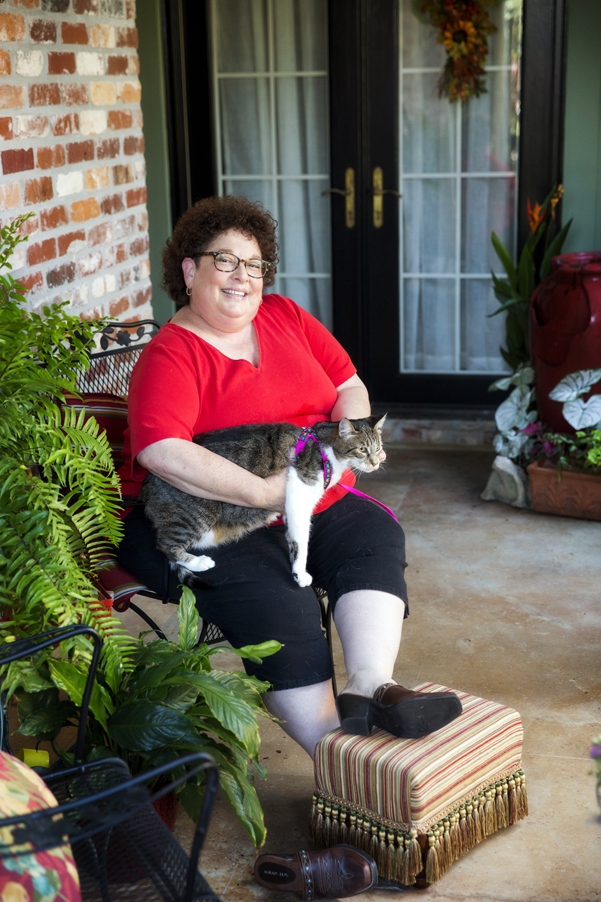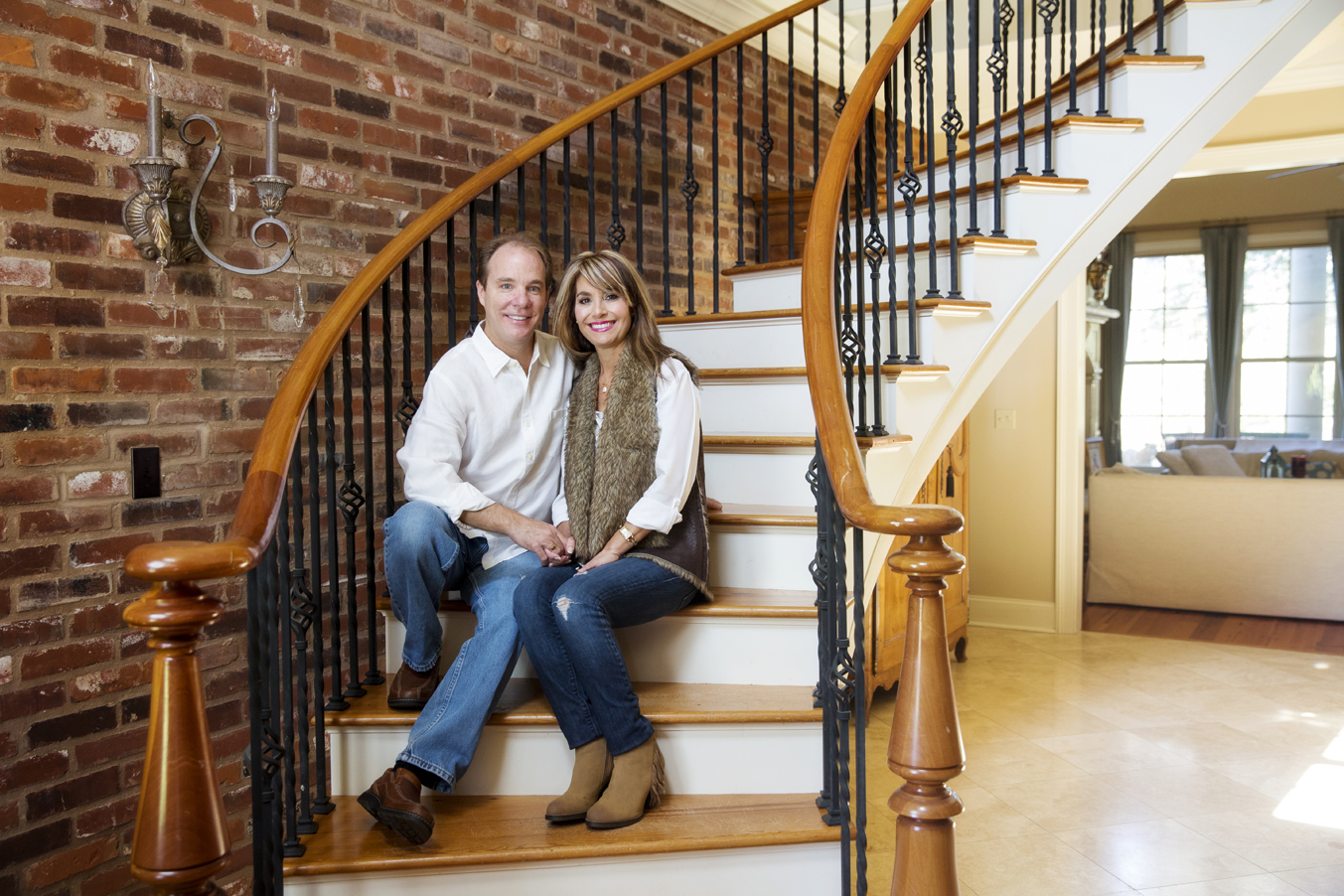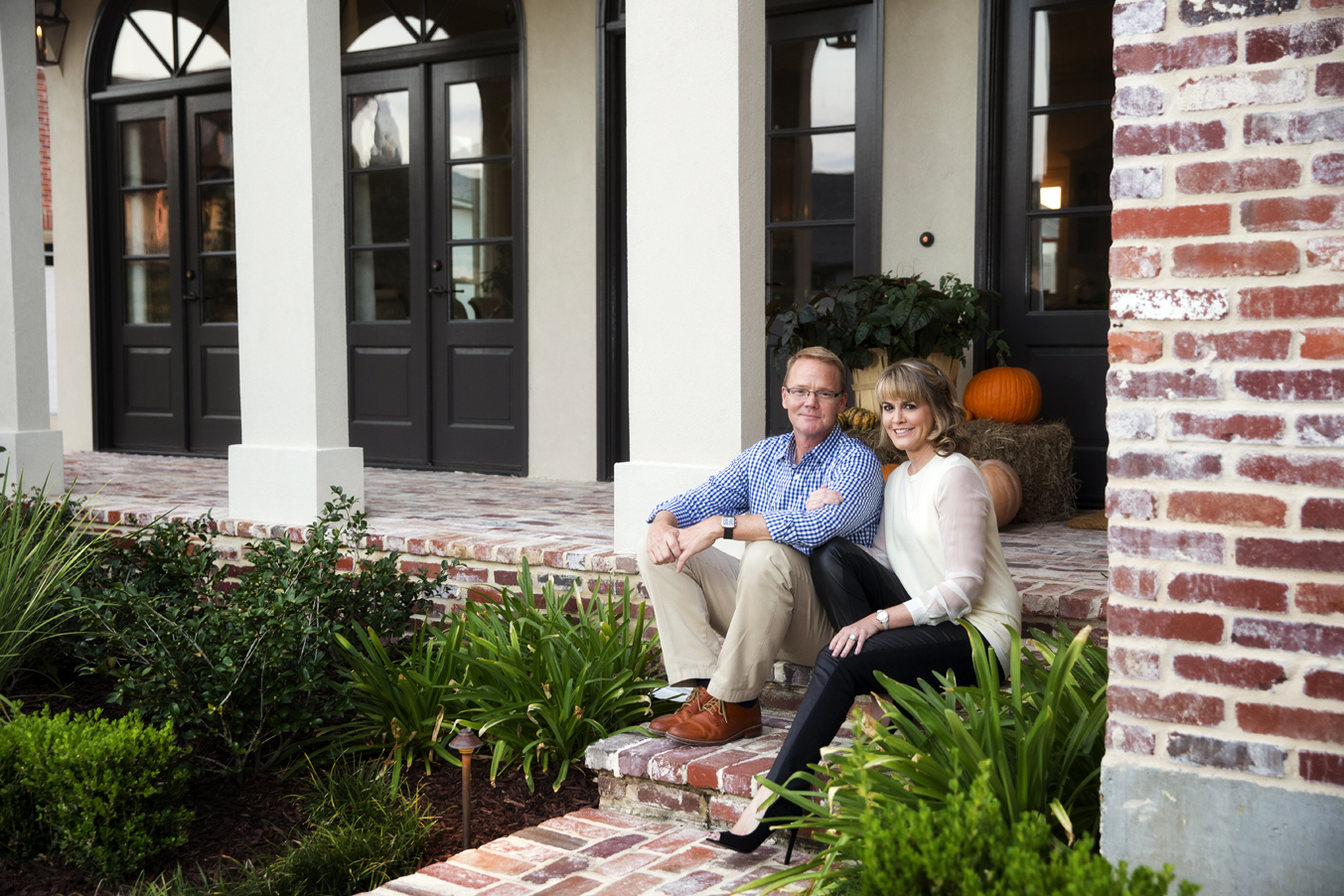Hurricane Katrina catapulted the Capital City from a provincial college town to a major metropolis—with the traffic to prove it. But, for the New Orleanians who now call Baton Rouge home, the city means much more.
A November to remember
This time 10 years ago, Louisiana was emerging from hurricane season battered and exhausted.
On Aug. 29, Hurricane Katrina barreled into New Orleans. The levee failure that followed flooded 80% of the city. Less than a month later, Hurricane Rita powered up Louisiana’s southwest coast.
Literally overnight, Baton Rouge’s population nearly doubled. The Capital City became the epicenter of a great migration as the storms chased New Orleanians in from the east and swept residents of Lake Charles and other communities in from the west.
Suddenly, grocery store lines were long and supplies were short. Demand for commercial and residential properties far outstripped inventory. As gridlock gripped Baton Rouge, even schools suspended their tardy policies because no one could reliably get anywhere on time.
A few months later, the hardships brought by the 2005 hurricane season were far from over, and the region’s recovery was far from complete. In mid-November, the makeshift morgue in St. Gabriel still held the remains of 320 storm victims; nearly half were unidentified. With the New Orleans levees repaired and the city drained, flooded properties were filling with mold and other contaminants.
Once New Orleans was declared safe enough for re-entry, families were faced with hard decisions about their future.
Some could not afford to return and rebuild. Even with insurance and Road Home approval, it was a long road. City services, reliable cell phone service, cable or access to a neighborhood grocery were spotty. Reputable contractors and repairmen were scarce, and there was no guarantee—even if a home or neighborhood were rebuilt—life would ever be the same.
Although data reveals the Capital Region’s population grew by 118,569 from 2005 to 2014, it is nearly impossible to know how many Katrina evacuees remain in Baton Rouge today.
And, even if they did, those numbers only tell part of the story.

Winds of change
Hurricane Ivan in September 2004 spurred the first mass evacuation of the Crescent City in six years, though the storm diverted to the Alabama/Florida line and returned later to pelt Cameron Parish with a tropical storm.
Like thousands of New Orleanians that year, Nicolle and Valentino Rovere reawakened to the reality that a hurricane had the power to upend their lives.
During their seven-hour commute from New Orleans to Baton Rouge with their 3-year-old daughter, the interior designer and the Italian-born restaurateur and real estate developer had plenty of time to contemplate New Orleans’ perilous position.
“Every time there was a storm, we came to Baton Rouge,” Valentino says. “It wasn’t really a choice. It was our back-up plan.”
On Aug. 28, 2005, New Orleans Mayor Ray Nagin issued the city’s first-ever mandatory evacuation order, and the family found themselves inching up I-10 West again.
In another part of town, Louisiana SPCA Chief Veterinarian Wendy Wolfson was evacuating more than 300 animals from the Japonica Street shelter in the Ninth Ward. Afterward, her family intended to spend one night at her college roommate’s Baton Rouge home.
That night, as expected, the slow-moving storm approached with torrents of rain and high winds. But, the next morning, there came unprecedented reports that the levees broke and water was swamping the city.
Almost immediately, even if by default, Baton Rouge, the quiet sister city of fun and flashy New Orleans, began to garner national attention as never before. The sleepy college town became an oasis of near-normalcy for a population traumatized by the realities of what was happening in the Crescent City.
Ansley and Jeff Zehnder evacuated to Lafayette. Since she was employed by a national corporation and traveled the country weekly, Ansley expected to return to work almost as soon as the skies cleared.
But with the levee breach, Jeff became convinced the Crescent City would not return to normal anytime soon. So, he immediately opened a Capital City branch of his advertising firm.
“[Baton Rougeans] were just so welcoming to all the people who came in from New Orleans—to me, my business and my employees,” he says. “We were able to hire some wonderful people [here]. It was an easy decision.”

Returning to the wreckage
In the months after the storm, many New Orleanians lived in limbo. Even if they resided elsewhere temporarily, they were wracked by uncertainty—not knowing if New Orleans would ever truly be inhabitable and whether its laissez-faire charm was lost forever.
During the first trip back to survey his Lakeview neighborhood, Clearview Parkway restaurant and Central Business District hotel, “[The city] looked like a war zone,” Valentino Rovere recalls. “I didn’t want my wife or my baby in that area. I just needed some place to settle the family in an environment that was semi-normal. So, we stayed for the stability of Baton Rouge.”
As soon as New Orleanians could return, dentist David Arrington, his wife, Toni, and their three children left Baton Rouge to rebuild their Metairie home and re-establish their dental practice. But after about a year, they decided to move to Austin and later, Baton Rouge.
“The rebuilding was moving very slow, and the politics were getting in the way—the same old New Orleans political corruption. From what we saw and heard, the city was not doing well,” David remembers.
As for veterinarian Wolfson, her evacuated LA SPCA animals remained safe, but her Lakeview home and the Ninth Ward shelter were a total loss. Still, she was determined to salvage her mother’s home and provide care to shelter animals and pet owners whose private practice vets had not returned.
“All I had was my car, my cats and my [family]—which was the most important thing,” she says. “It was difficult living there. Every time I would drive by my house, it was very upsetting. I was so driven to regain everything I had lost. Working at the SPCA was so hard and exhausting, I did not have time to feel sorry for myself. There was no end to the animals and no end to the work.”
The Zehnders also quickly became exhausted by the struggle to re-establish a home and routine. After seven months in Baton Rouge, they moved to New Orleans for a year before returning to Baton Rouge in 2008.
“It was easier and more pleasant to be here on a permanent basis,” Ansley says. “It came down to a decision about quality of life, setting down some roots and having some normalcy.”

Safety, sanity, stability and community
In addition to offering a respite from the insanity of life in New Orleans, fond memories of LSU and Southern University prompted many alumni to consider this college town their second home.
While the Arringtons enjoyed living in Austin, they felt the constant pull of South Louisiana culture. “We missed home—the festivals, the food, the people, the culture, [our] church and the relationships we had built,” David says. “Being away for [so long] makes you look back and cherish the things you left behind.”
When choosing a Louisiana city for relocation, Baton Rouge topped the list. “I went to LSU,” David continues. “I was very comfortable in Baton Rouge.”
“We have several friends and family members who moved here [after the storm],” Toni adds. “They don’t regret it.”
For the Zehnders and Wolfson, the LSU Vet School also held special significance.
Shortly after Katrina, the Zehnders’ treasured pug, Milo, was diagnosed with cancer and began a six-week radiation regimen. Much like parents who avoided uprooting children settled in a new school, the Zehnders priority was preserving Milo’s schedule and their rapport with his clinical team.
“We found wonderful care at LSU’s oncology services,” Jeff says. “Because of LSU, we had Milo for three years that we wouldn’t have [otherwise].”
The Vet School provided a different opportunity for Wolfson. While attending a conference there in 2008, colleagues asked if she would consider leaving her 20-year career at the LA SPCA to become the first director of LSU’s Shelter Medicine Program. She jumped at the chance.
“I wanted to do something different and to be somewhere where there were trees and birds—not mold and mildew and the [constant sound of] pile-driving,” she explains. “There were grocery stores and conveniences within three blocks of your house. That was just miraculous.”

Gradually becoming home
Many former New Orleanians admit they never intended to make Baton Rouge their home. But, ultimately, the city’s pervasive sense of calm enticed them to stay.
“At the moment of Katrina, Baton Rouge had what we emotionally needed,” Valentino says. “We could have moved to Napa Valley or Atlanta; but, [this city] gradually became home.”
Besides involvement in their daughter’s school, the Roveres have become part of Healing Place Church, Trafficking Hope and Hope House.
“We said we were going to be here temporarily,” Nicolle says. “One year led to another until 2011, [when] we finally started working on house plans. Once we built the house, we knew we were here for good.”
Even though Valentino now works with Advantage Capital Partners in New Orleans, their daughter and their home anchor the couple in Baton Rouge.
The Zehnders, too, could have easily left Louisiana. Ansley’s former job required constant travel, and Jeff established thriving businesses in New Orleans, Baton Rouge and Nashville.
“[Baton Rouge] has been a very nice place to call our home, and it’s geographically in an attractive location,” Ansley says. “It allows us to spend a lot of time in New Orleans [and] in Lafayette with our families.”
The couple has also become involved in the community. Jeff Zehnder serves on the Dean’s Advisory Council at LSU’s E.J. Ourso College of Business, the Center for Planning Excellence and Baton Rouge Area Foundation. Now the Baton Rouge Area Chamber’s senior vice president of marketing, Ansley shares passion for pups as a board member of Yelp!BR.
The Arringtons, too, have left their mark on the region, providing Gonzales’ growing population with access to full-service family dental care. And even with New Orleans’ recent strides, the Arringtons have no desire to move back.
“Having gone through Katrina, we don’t want to [go] through that experience [again],” David says. “It may never happen again, but we’re not going to take that chance.”
Wolfson has established one of the country’s best shelter medicine programs at LSU, which educates vet students and provides care to 30 rural Louisiana shelters without staff veterinarians.
“I love New Orleans, but Baton Rouge helped me heal,” Wolfson says.
Ansley and Jeff Zehnder assert there’s no longer a need to choose between a life in New Orleans and Baton Rouge because the regions are melding together.
“The Baton Rouge business community is much more collaborative with New Orleans [than 10 years ago],” Ansley says. “[In economic development], we’re working very collaboratively and marketing the whole region.”
A flower grows
Years before the storm, Wendy Wolfson had refurbished a Lakeview home and enhanced the yard with a garden. She was devastated when floodwaters from the 17th Street Canal forced her to demolish the house.
But within two months, sunflowers, cherry tomatoes and larkspur sprang up.
“My lot looked like a field of flowers. It was just gorgeous,” Wolfson says.
Based on their experiences over the past decade, she and many New Orleanians maintain something good can come from the most terrible of circumstances. Some New Orleanians who never envisioned living anywhere else have unexpectedly found themselves happy and at home just 80 miles down the road.
“Now, when I see tragedies that hit other communities,” Wolfson says. “I want to tell them: Even from the worst thing ever, you can have flowers bloom.”
By the numbers:
Population shifts after Katrina
40%
of Louisiana natives who relocated from their pre-hurricane addresses remained in the state
72,000
New Orleanians still having mail forwarded to Baton Rouge addresses by August 2006, one year after Katrina
1,337,726
Metropolitan New Orleans population in 2000
1,251,849
Metropolitan New Orleans population in 2014
706,909
The Capital Region’s population in 2005
825,478
The Capital Region’s population in 2014 (a 17% increase)
Sources: 2008 Bureau of Labor & Statistics article; NPR, U.S. Postal Service estimates; The Data Center’s analysis of the U.S. Census Bureau’s Decennial Census and Population; U.S. Census Bureau; County Business Patterns; Baton Rouge Area Chamber Analysis
New faces
New people in Baton Rouge meant new businesses. Here’s a short list of some New Orleans businesses that opened in Baton Rouge in the years following the storm:
Acme Oyster House
Boudreaux’s Fine Jewelers
The Bulldog
Galatoire’s Bistro
La Divina Gelateria
Lucy’s Retired Surfers Bar and Restaurant
Martin’s Wine Cellar
Reginelli’s
The Rum House
Swap Boutique
The Velvet Cactus
Source: Greater Baton Rouge Business Report








